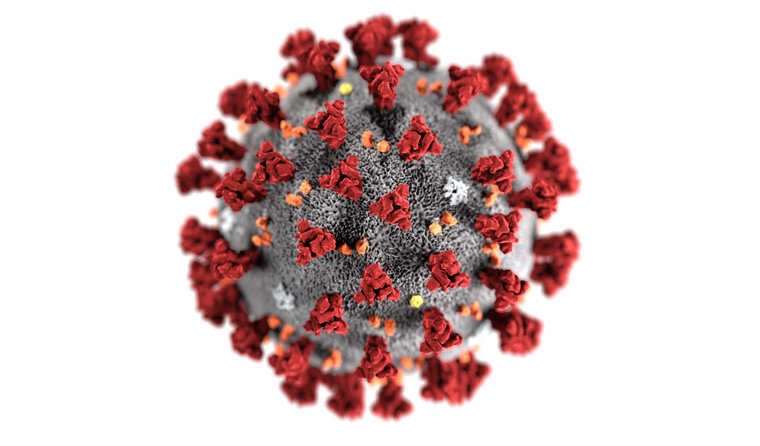Feature
Clinical course of COVID-19: What GPs need to know
newsGP looks at the presenting symptoms, how the illness progresses clinically, and why patients deteriorate.
 Experts warn patients with COVID-19 may appear to improve but can then experience a rapid deterioration later in the illness.
Experts warn patients with COVID-19 may appear to improve but can then experience a rapid deterioration later in the illness.
As the number of Australians with COVID-19 continues to climb, more information is being gathered regarding how the infection presents and what type of course it may run.
Presenting complaint
According to the Department of Health, the recognised symptoms of COVID-19 (coronavirus) currently include fever, shortness of breath, and flu-like symptoms such as coughing, sore throat and fatigue.
But Associate Professor Louis Irving, Director of Respiratory and Sleep Medicine at the Royal Melbourne Hospital, believes there are more possible presenting features of COVID-19.
One key feature may be asymptomatic carriage, he said.
Others may include anosmia, reduced sense of smell or taste, altered taste, gastrointestinal symptoms and cardiac presentations, including new onset myocarditis, pericarditis or atrial fibrillation.
Gastrointestinal symptoms are such a common feature of COVID-19, they comprised the chief complaint in 48.5% of patients, a paper published in The American Journal of Gastroenterology on 20 March found.
That research examined 204 patients with COVID-19. Reported symptoms ranged from anorexia (83% of cases) to diarrhoea (29%), vomiting (0.8%) and abdominal pain (0.4%).
Of note, the paper reported patients without gastrointestinal symptoms were more likely to be cured and discharged than patients with the above symptoms (60% versus 34.3%).
How does the infection progress?
‘The clinical course is highly variable,’ Associate Professor Irving said.
‘Some patients spontaneously improve, and other patients deteriorate. The deterioration can be a few days, even a week later, rather than a stepwise deterioration from the time of presentation.
‘That’s the really tricky bit.’
Just as patients appear to be improving clinically, they can deteriorate rapidly.
‘And I think that’s one of the take-home messages: that the course is not reliable,’ Associate Professor Irving said.
Citing a message he received on social media reportedly written by an emergency physician in New Orleans, Associate Professor Irving said the writer claims to have seen ‘several hundred’ COVID-19 patients and writes down a possible course of the illness.
Associate Professor Irving said this is likely to be an accurate representation of the clinical course of COVID-19:
- Day 2–11 post-exposure (on average, day 5) – the patient develops onset of flu-like symptoms. These commonly include fever, headache, dry cough and myalgia (mainly back pain), nausea without emesis, abdominal discomfort with some diarrhoea, anorexia, anosmia and fatigue.
- Day 5 – The patient is likely to develop increasing shortness of breath due to bilateral viral pneumonia.
- Day 10 – A cytokine storm may occur in those with severe manifestations of SARS-CoV-2, leading to acute lung injury (previously known as acute respiratory disease syndrome [ARDS]) and multi-organ failure.
According to the above source, 81% of patients experience mild symptoms, 14% have a severe disease requiring hospitalisation, and 5% of patients become ‘critical’.
Recent research supports these numbers.
The case series involving 138 patients in Wuhan, China, was published in
JAMA Network on 7 February. It found the median time from first symptom to dyspnoea was five days, to hospital admission seven days, and to acute lung injury eight days.
Of the patients studied, 26% required admission to an intensive care unit (ICU), and 4.3% died.
According to research in
The Lancet, patients with COVID-19 who tend to fare worse include those who are older, and those who have underlying comorbidities such as hypertension and cardiovascular disease.
Associate Professor Irving said it is currently unclear whether patients who undergo that rapid deterioration are those who had a more severe illness to begin with, or whether people with mild illness are as likely to go downhill.
‘I’d make the recommendation that all patients should be encouraged to report any worsening, even if they initially appear to be getting better,’ he said.
‘It has to be worded in a way that doesn’t scare the daylights out of them, but they shouldn’t be complacent.’
The reason patients with COVID-19 tend to have a late deterioration in their illness may relate to a sudden worsening of the lung disease itself, or as an immune reaction to a cytokine storm, Associate Professor Irving said.
Most patients who do not survive COVID-19 succumb to severe lung injury, Associate Professor Irving said.
‘What that means is the capillary bed and the alveolar spaces are damaged and inflamed. Their lungs become stiff and don’t exchange gas and they die a hypoxic death,’ he explained.
‘But it could be other pathologies, [such as] ongoing viral infection and even secondary pneumonia that’s not showing up, and obviously worsening of other comorbidities.’
However, Associate Professor Irving is keen to note the vast majority of patients with COVID-19 recover from the illness. He said there is obviously no data yet on long-term effects following COVID-19, but that the likely prognosis can be extrapolated based on similar respiratory illnesses.
Young, otherwise healthy patients who experience mild illness and recover are more likely to develop secondary bacterial infection in the three months following COVID-19.
Meanwhile, older patients are at increased risk of myocardial infarction for two years following this illness.
The minority of people who develop an acute lung injury and survive, or those who develop secondary bacterial pneumonia, may end up with permanent pulmonary fibrosis.
‘But the average person who gets a respiratory virus and recovers is likely to have no long-term sequelae,’ Associate Professor Irving said.
The RACGP has more information on coronavirus available on its website.
Log in below to join the conversation.
acute lung injury coronavirus COVID-19
newsGP weekly poll
How often do patients ask you about weight-loss medications such as semaglutide or tirzepatide?